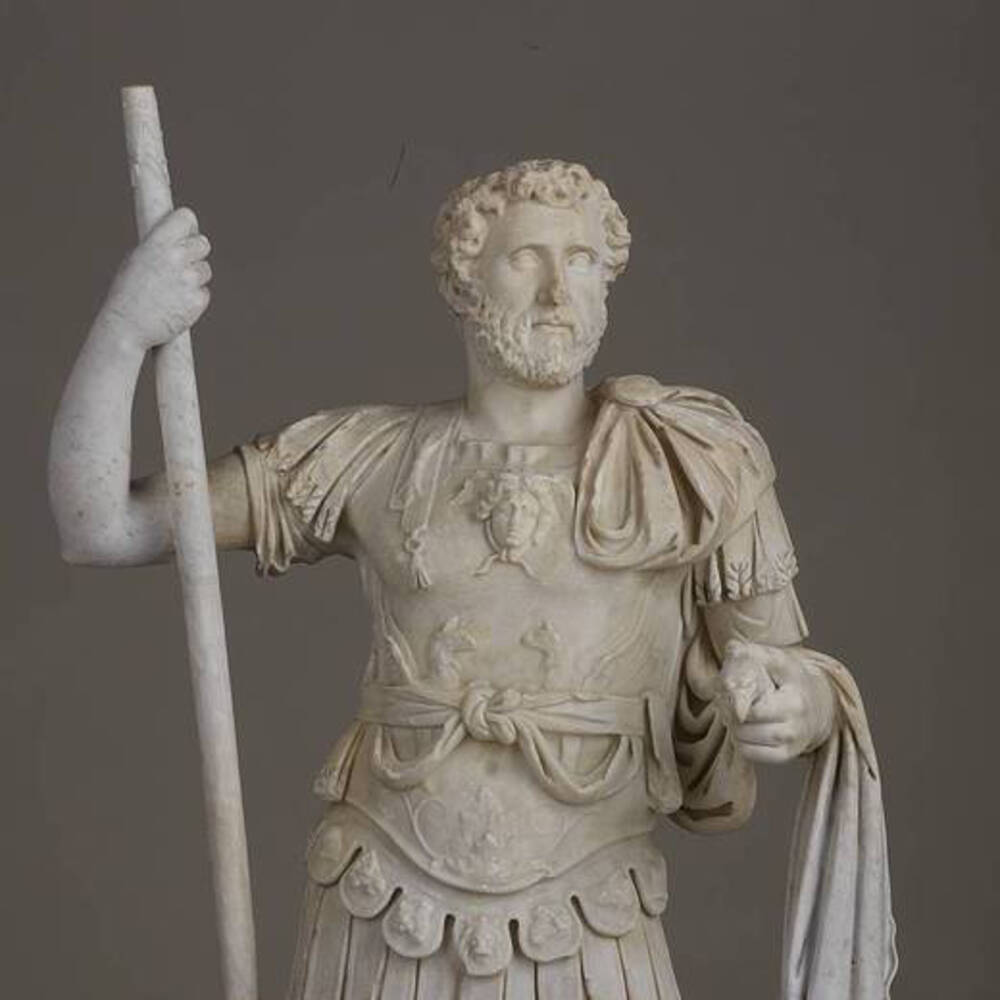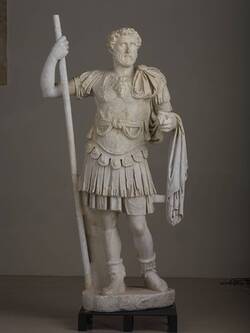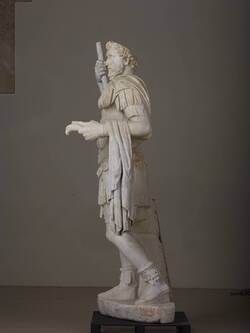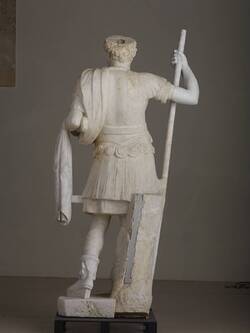This larger than life-size statue depicts the Emperor Antoninus Pius (r. 138–161 CE) as a successful military commander. The Emperor Augustus had already had himself portrayed in this manner, dressed in armour, and around the middle of the second century CE there must have been several thousand bronze and marble statues of this type in the Roman Empire. The Dresden statue is one of the best preserved ‘armoured statues’; it even retains part of the original lance.
Further Media




We often talk of Roman art – and yet probably without exception, the Roman emperors were portrayed by Greek sculptors working in bronze or marble, usually also from Greece. Several hundred signatures on these works testify to the sculptors’ Greek origins. The Romans no doubt appreciated the statues, but evidently they regarded sculpture as a lower status artisan craft. No Roman would have deigned to train as a sculptor or brass founder.
Many of the statues unmistakably reference very specific Greek models. As a rule, these originals were bronze statues dating from the golden age of classical sculpture in the fourth and fifth century BC. Yet even if Roman statuary was made by Greek sculptors and modelled on Greek originals, it was still influenced by the accepted visual norms of its day. Moreover, the material was worked in a different way by sculptors in Rome and those in classical Greece, which is why the copies always bear the traces of a particular style during the time they were created.
- Location & Dating
- c. 150/60 CE
- Material & Technique
- Parian marble
- Dimenions
- H: 222,0 cm, B: 110,0 cm, T: 83,0 cm
- Museum
- Skulpturensammlung
- Inventory number
- Hm 383